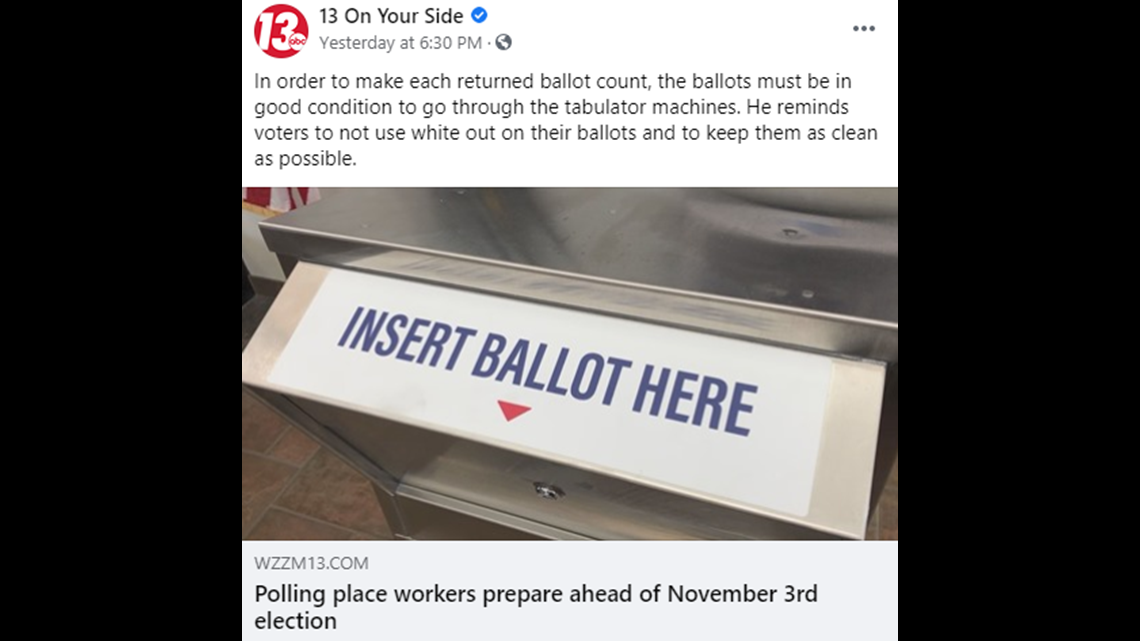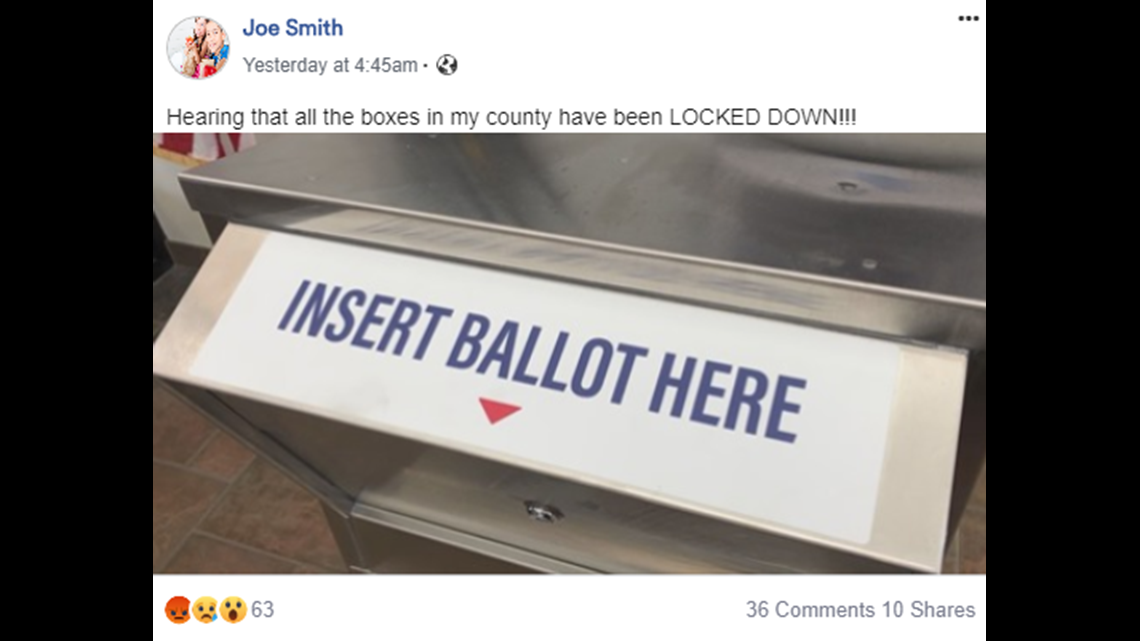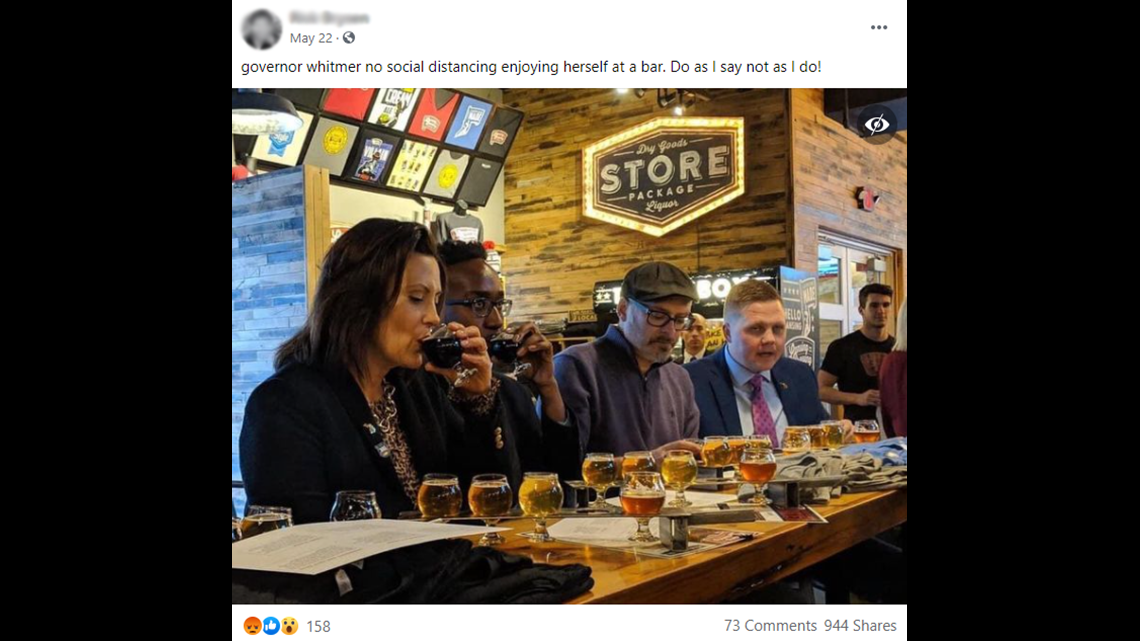GRAND RAPIDS, Mich. — No one wants to share something on Facebook and then find out it was wrong. But every day we face a fire hose of information. A lot of it is incorrect, and social media allows it to run wild.
At 13 ON YOUR SIDE, we VERIFY all we can to help you know what’s real and what’s not. And we want to provide you with the tools to verify on your own using this guide from First Draft, a nonprofit coalition battling bad information online.
We will start by looking at the two broad categories of incorrect information you will encounter online: misinformation and disinformation.
The main difference between the two is intent.
Misinformation is false content that is shared by someone who doesn’t realize it’s wrong. Kind of like the person in your feed who shared an article by The Onion without realizing it’s satire. Included in this category as well would be photos with a misleading caption or headline or a photo supposedly from one event that is actually from an entirely different event. In all these cases, the person passing it along thinks it is real.
Disinformation is shared with malicious intent. This is something purposely created to seem legitimate but has an agenda to manipulate or cause harm. Examples of this are manipulated audio or video—like deep fakes—or a site made to look like a legitimate, unbiased news site but isn’t.
These are two ends of a spectrum of false information.
On the far side of misinformation you have satire. These are articles like this from The Onion that get shared. But just like the child's game telephone, as it is passed along, information gets lost and you may lose the context that it was originally from The Onion and meant to be satire. Those people seeing it at the end are experiencing an unintentional does of misinformation.
Then we have false connection – where the headline, visuals or captions don’t support the content. Think about clickbait articles or those lists online where the image is nowhere to be found when you click through.
Misleading content comes in many forms: cropping a photo, picking and choosing quotes, or even in framing data in a way that misrepresents what it actually shows.


The graph on the left looks to be a large difference. But look at the Y-axis. When you see the whole graph, you can see the difference isn't really that great.
Next comes false context. Where someone takes something real, like this photo:


But then they claim it's from something totally different.


Imposter content tries to look like it’s from a legitimate source, either a tweet, a post, or a news story, but it’s not. Make sure you check the original source--did that person actually tweet that? Is it a news source you recognize? If you see an article from a source called the West Michigan Quibbler, you may want to look twice as they may be a made up news source and have an agenda.
There is manipulated content. People take real visuals and manipulate them into some thing they are not. Like slightly slowing someone down to make them appear to be intoxicated. Here is an example of someone doing that as a joke. But imagine if you saw it in a post where someone says "Was he drunk during this interview???"
Finally there is fabricated content. Articles, videos or audio that are completely made up would fall into this category. Deep-fake videos and articles about events that never happened are prime examples. These are designed to cause a reaction or push an agenda.
WHAT CAN WE DO?
If you see a something online, and it causes a reaction in you, that’s a surefire sign you need to take a second look at a post before you share it.
Here are the four Ws to help you verify information you come across online.
WHERE did it come from?
When you see a tweet, meme, or post are you looking at the original source of information? Or has the information been passed on from person to person? As we mentioned the game of telephone earlier, did the information get muddied along the way? If you see something you’re unsure about, google it. Find out how to do a reverse image search on Google.
WHO did it come from?
Investigate the source of the information. Ask yourself: who uploaded it? Did they create the content or just share it? Where are they getting the information? Remember, anyone can post whatever they like online. Look for recognizable, established sources with credible experts, witnesses, and verifiable facts.
WHY was this posted?
Is it supposed to make you feel a certain way? To get you angry or upset? Look at the profile of the person who posted it. Are they a member of an online community that promotes a specific cause? Do you recognize the organization they’re working for? Does it seem like they could have an agenda?
WHEN did this happen?
Investigate the date and location of the information you see. Content will get recirculated out of context. Google's reverse image search is good for this as well.
For example, during the pandemic, this photo circulated of Michigan's Gov. Gretchen Whitmer at a bar, claiming she was breaking her own quarantine rules.


The truth is that photo had been taken over a year previously.
This seems like a lot of work. How can you VERIFY every bit of information you come across? The truth is you can't. But what really matters is taking a moment to think about what you’re sharing before you share it. Recognize when something causes strong feelings in you, it's worth digging a little deeper. By doing this, we can cut down on the amount of unintentional misinformation out there, and in turn, weaken the impact of malicious disinformation.
►Make it easy to keep up to date with more stories like this. Download the 13 ON YOUR SIDE app now.
Have a news tip? Email news@13onyourside.com, visit our Facebook page or Twitter. Subscribe to our YouTube channel.

